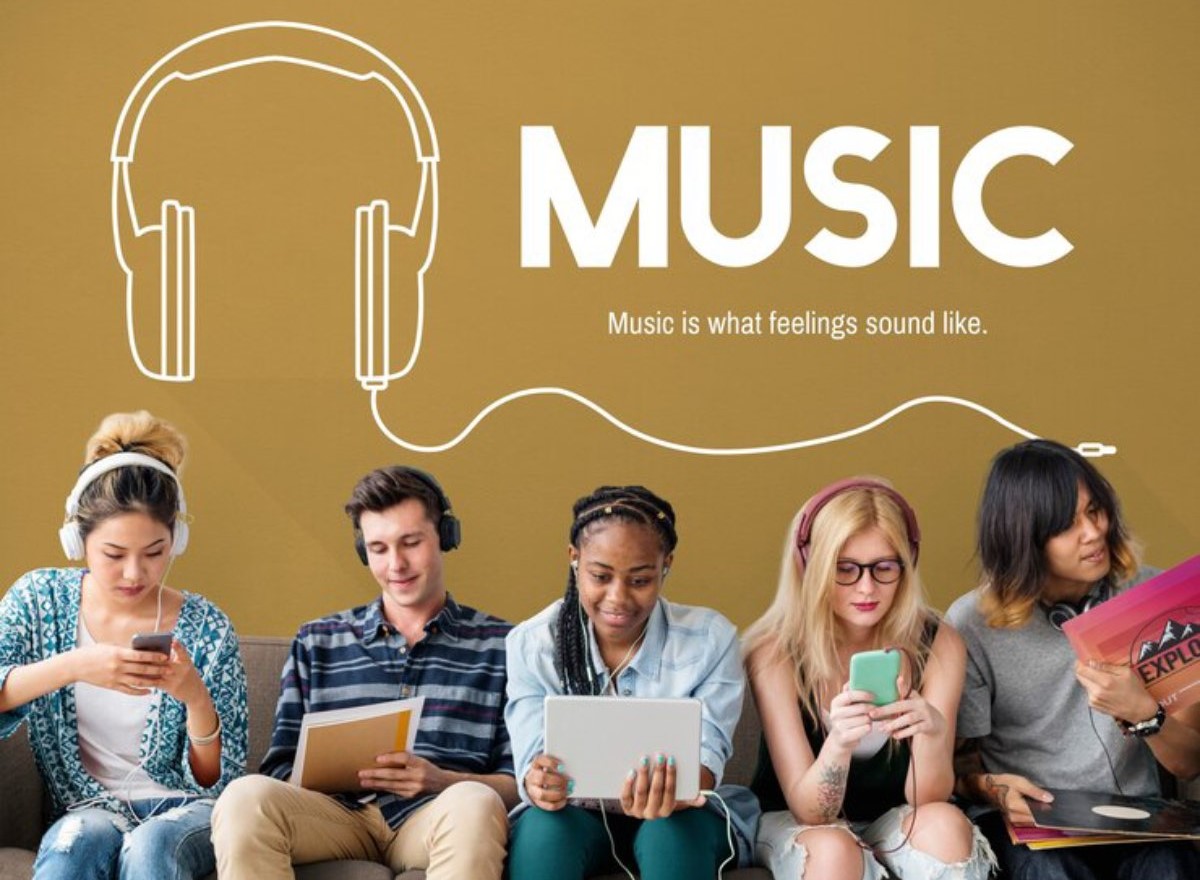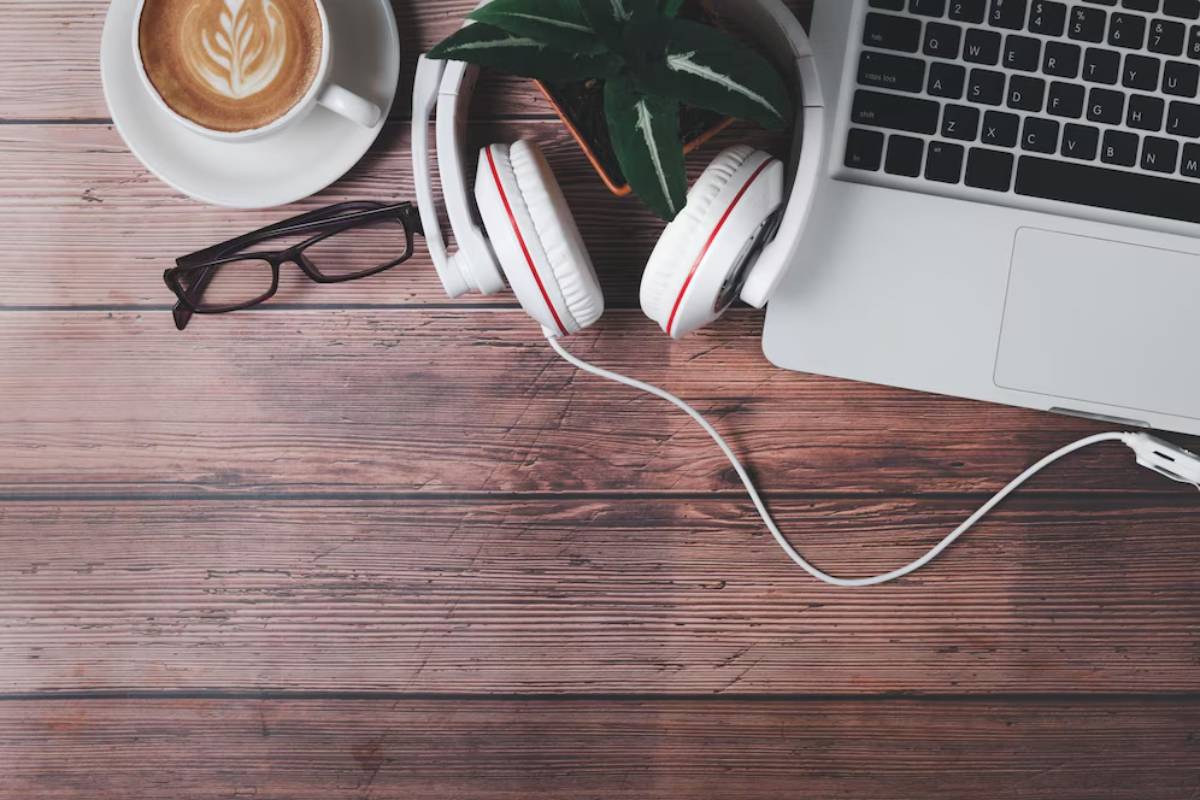
Soundscapes and Music for Focused Work
You’re in the zone. Fingers gliding across keys, ideas flowing like a stream — and then, the clatter of a coffee mug. A loud laugh from the corridor. Your neighbour’s playlist is leaking through the wall.
Suddenly, the zone is gone.
Whether you’re in a bustling office, a café, or your home workspace, sound can either elevate your concentration or fracture it entirely. That’s where focus music, white noise, and curated deep work audio come into play. They’re not just background filler — they’re tools for protecting your flow state.
In this blog, we’ll explore how sound influences your attention, which types of audio enhance deep work, and how to craft the perfect auditory environment to stay mentally sharp. With science, anecdotes, and practical tips, you’ll learn how to tune out distractions — and tune into your best work.
How Sound Impacts Your Brain’s Focus
The Psychology of Attention and Distraction
Our brains are wired to respond to sound, especially sudden or human-made noises. It’s a survival instinct. But in today’s work culture, that sensitivity becomes a liability.
Each interruption — a phone buzz, a co-worker’s cough, or even ambient chatter — can cost you up to 23 minutes to regain full focus, according to research from the University of California, Irvine.
This is why ambient sound isn’t just decorative. It can serve as a cognitive shield, creating a buffer between your attention and the chaos around you.
Auditory Input and Cognitive Load
Sound that’s mismatched to your task can increase cognitive load, making it harder for your brain to process what matters. Conversely, well-selected audio reduces effort by:
- Minimising irrelevant distractions
- Enhancing mood and motivation
- Supporting sustained attention
But not all audio is created equal — let’s break it down.
Types of Audio That Support Deep Work
1. White Noise and Ambient Sound
White noise is like an acoustic fog — a steady stream of sound that blurs the edges of your environment. It’s especially useful in open-plan offices or urban homes where unpredictability reigns.
Examples:
- Fan or HVAC sounds
- Rainfall and ocean waves
- Cracking fire or rustling leaves
According to a 2017 study published in the journal Scientific Reports, white noise can improve memory and attention, particularly in neurodivergent individuals.
2. Brown Noise: A Deeper Calm
Less shrill than white noise, brown noise features lower frequencies — think of a deep waterfall or distant thunder.
It’s ideal for:
- Reducing anxiety
- Blocking low-level human conversation
- Creating a feeling of grounding and safety
Tip: If you find white noise too harsh, try brown noise instead. Many people find it more soothing and less fatiguing over long sessions.
3. Nature Soundscapes
Natural sounds tap into our primal comfort zones. They reduce cortisol levels, regulate heart rate, and induce calm, all of which prime the brain for focus.
Top picks:
- Forest Ambience
- Gentle river streams
- Birdsong or crickets
Nature soundscapes also support creative problem-solving, according to research in the Journal of Environmental Psychology.

4. Focus Music: Instrumental and Rhythmic
Music designed for focus typically follows a few key rules:
- No lyrics
- Predictable tempo (60–80 BPM mimics resting heart rate)
- Minimal dynamic changes
Genres like classical, electronic, ambient, lo-fi beats, and cinematic scores are excellent. Tools like Brain.fm use AI to generate scientifically optimised tracks that synchronise with neural patterns.
Common favourites:
- Lo-fi hip hop (“beats to study to”)
- Instrumental jazz or piano
- Video game soundtracks (engineered for flow without distraction)
What to Avoid: Sounds That Disrupt Deep Work
Lyrical Content
Lyrics activate your language centres, competing with reading, writing, and verbal reasoning tasks.
Avoid vocal tracks unless you’re doing nonverbal or highly repetitive work (like data entry).
Randomised Playlists
Switching genres or moods mid-session can jolt your focus. That upbeat pop track might be great for your workout, not so much for a strategy report.
Instead, curate playlists with consistent energy and tone.
Variable Volume and Harsh Transitions
Jarring volume changes break immersion. Look for crossfaded transitions or platforms with ambient fade-ins and outs.
Spotify tip: enable “gapless playback” and set crossfade to at least 5 seconds.
Crafting Your Personal Deep Work Audio Strategy
Consider Your Task Type
Different sounds serve different types of cognitive demand:
| Task Type | Best Audio Choice |
|---|---|
| Writing or reading | Lo-fi beats or classical music |
| Coding or design work | Ambient electronic or nature |
| Admin or email replies | Chill jazz or instrumental pop |
| Brainstorming sessions | Soundscapes with light rhythm |
| Meditation or ideation | Brown noise or forest sounds |
Match Sound to Mental State
Are you feeling tense, sleepy, or overstimulated? Use audio to adjust your internal state:
- Low energy? Try faster ambient techno or cinematic scores.
- Anxious or over-alert? Go for brown noise or slow piano.
- Mentally scattered? Start with 5 minutes of rain or white noise.
Use Time-Based Sound Blocks
Structure your deep work using soundscapes as cues:
- Start-up sound: A specific track that signals the beginning of a deep work session
- Main focus block: 45–90 minutes of consistent instrumental or ambient music
- Break signal: A unique chime or relaxing transition track
- End cap: Soft piano or nature sounds to ease you out
This ritualisation trains your brain to enter flow more predictably.

Tech Tools for Managing Your Focus Audio
Apps and Platforms to Explore
- Brain.fm – AI-generated music tuned for focus, relaxation, or sleep
- Endel – Adaptive soundscapes based on time of day and movement
- Noisli – Custom mix of white noise, rain, wind, and more
- myNoise – Highly customisable noise generators for every mood
- YouTube/Spotify – Search “focus music” or “study with me” playlists
Hardware Makes a Difference
- Noise-cancelling headphones: Crucial for shared spaces
- Open-ear headphones: Good for low-pressure environments where awareness is needed
- Bluetooth speakers: Ideal for solo workspaces where full-room audio creates immersion
Real-World Voices: How People Use Audio for Deep Work
- Mira, 34, editor: “I use ocean waves and cello music in the morning — it’s my cue that it’s time to write. If I try to work in silence, my mind drifts. The right sounds lock me in.”
- Tom, 28, UX designer: “For wireframing, I use lo-fi beats. For brainstorming, I switch to nature sounds. Each one puts me in a different creative gear.”
- Sarah, 42, therapist and author: “I started using brown noise to block background noise while writing client reports — I didn’t expect it to make such a difference to my energy.”
Conclusion: Find Your Focus Frequency
Your environment isn’t just visual — it’s acoustic. And when you’re seeking deep work, your ears can be just as important as your eyes.
Whether it’s the gentle rustle of leaves, the rhythmic pulse of lo-fi beats, or a seamless wash of white noise, sound can be your silent ally in cutting through distraction and staying mentally sharp.
The key is to experiment. What works for your friend might not work for you. But once you find your focus frequency — that perfect blend of tone, rhythm, and mood — you’ll wonder how you ever worked without it.


